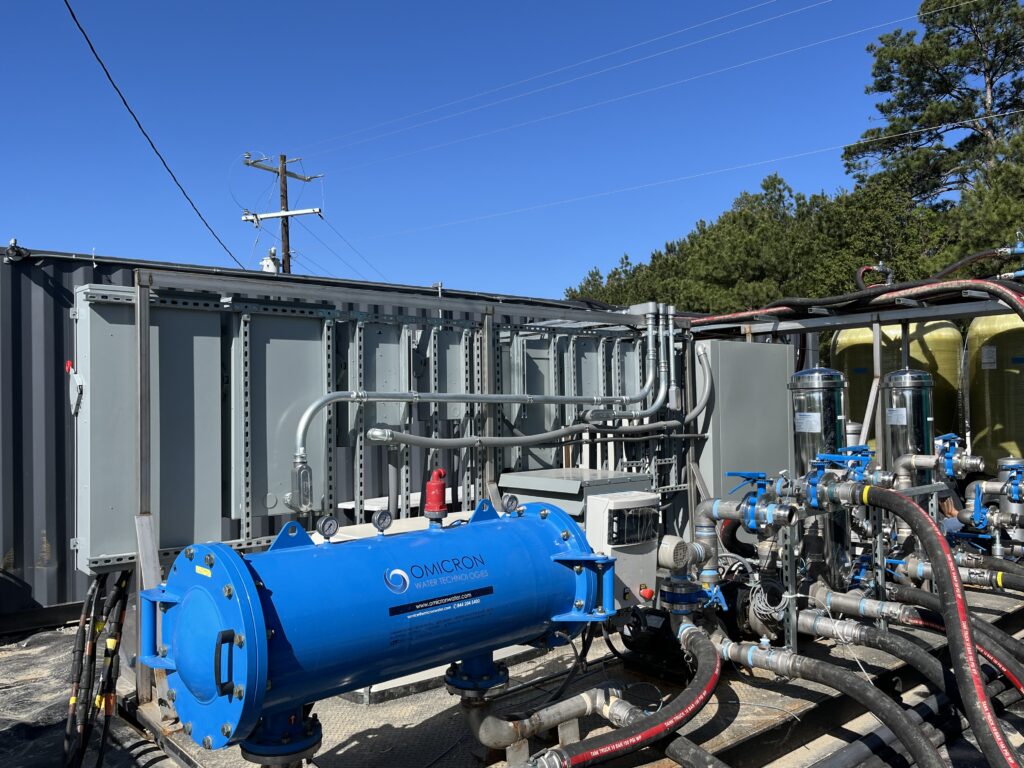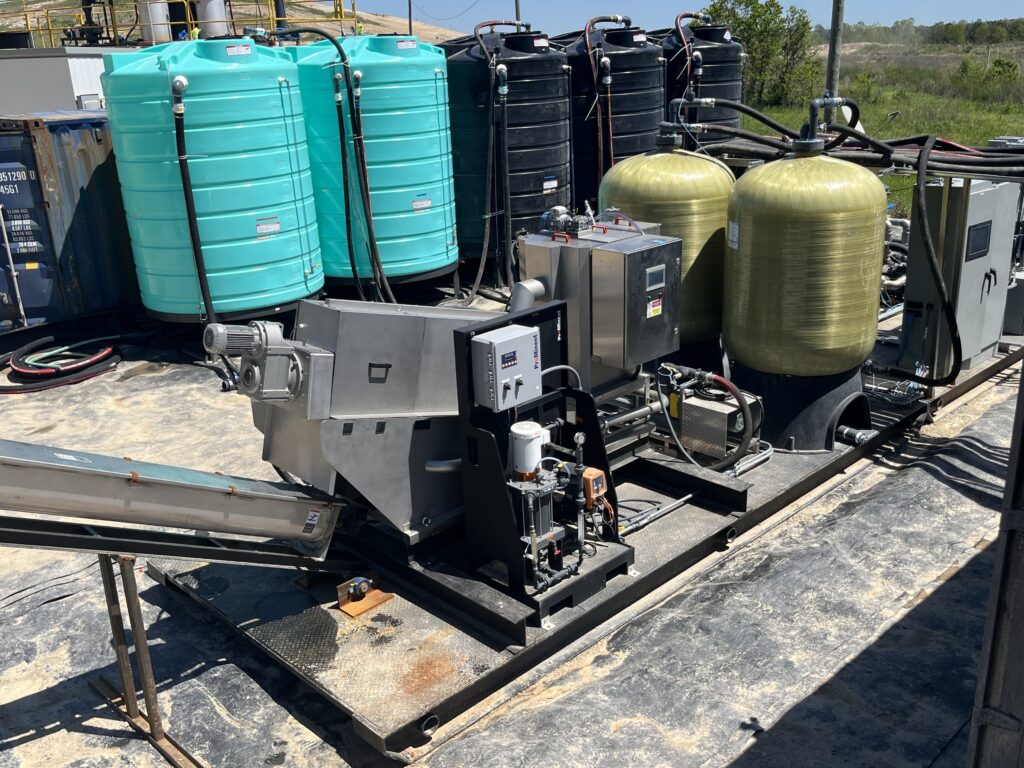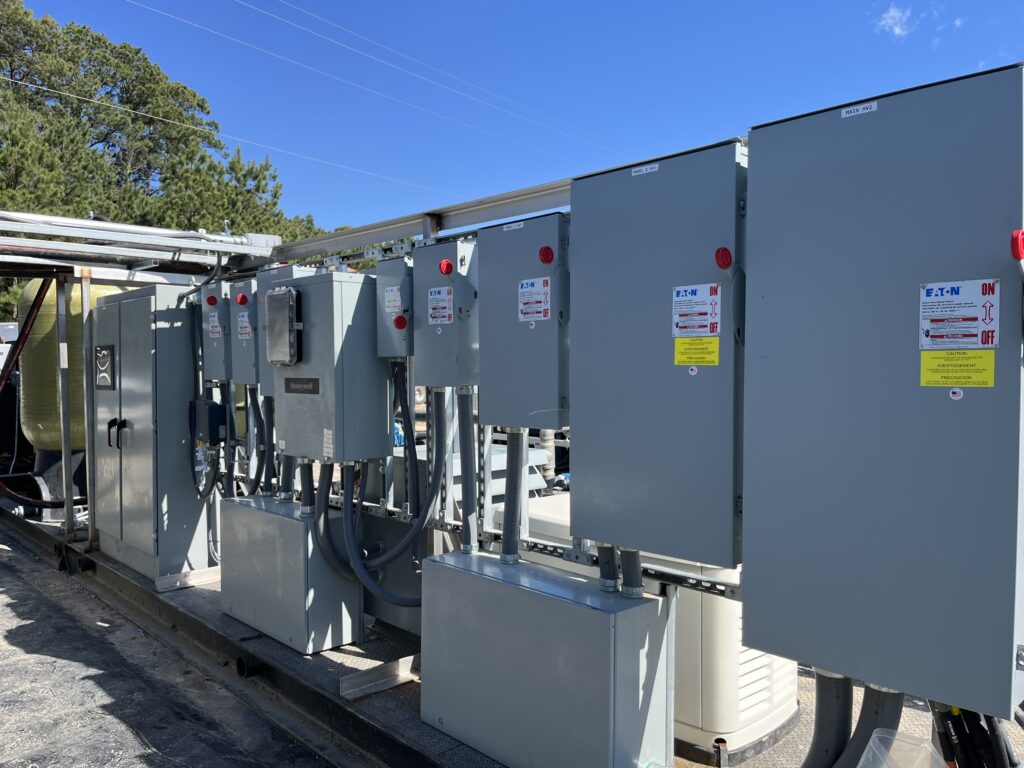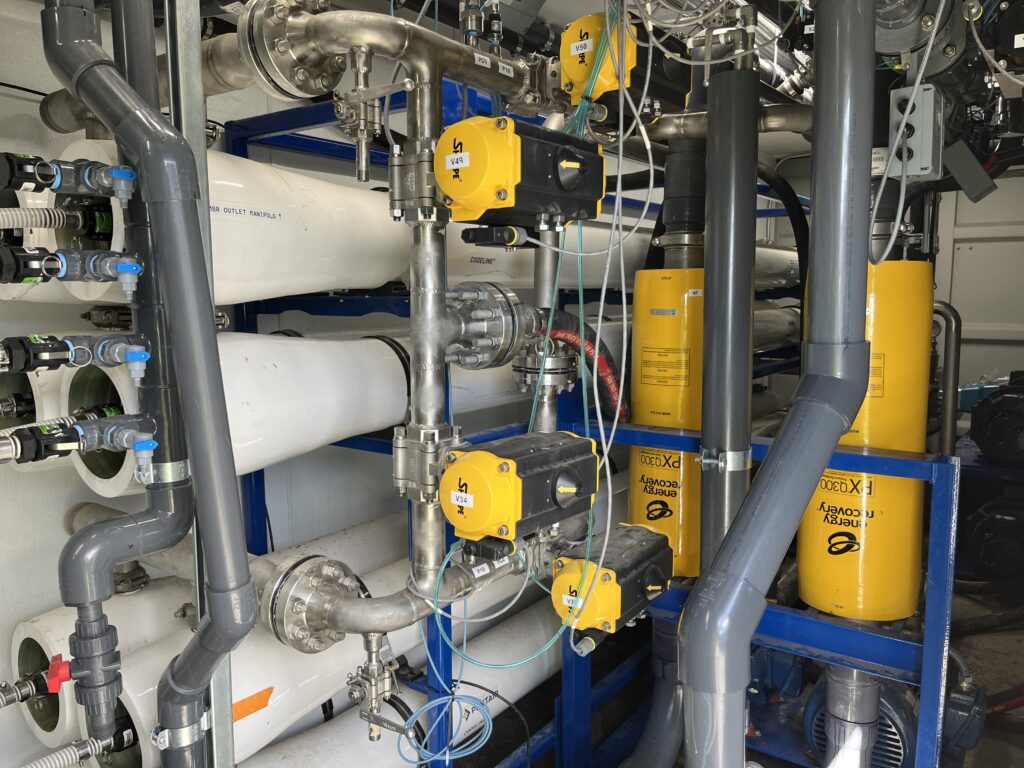Along the hot and sticky Gulf Coast, there’s a landfill. Every year, it accepts roughly 700,000 tons of waste onto its 60-acre facility.
For landfills in wet climates like the Southeast, where big storms roll through often, and humidity hangs heavy in the air, leachate management presents a serious challenge. And this landfill is no different.
It’s even more challenging when your leachate pond is getting full.
The subsidiary that owns and operates this landfill sent John, a corporate engineer and sustainability manager who asked to remain anonymous, down to access the situation. John’s goal? Find a leachate management solution before this situation truly became a problem.
He turned to our team at Atmos Technologies.
Here’s how our team helped him find an alternative way to cost-effectively manage this landfill’s leachate.
A leachate pond on the verge of overflow
Depending on rainfall amounts, the landfill generates between 15 and 20 million gallons of leachate per year, which is standard for the region. Before working with Atmos, most of that leachate went into a large pond.
“You can fill up the pond, but you can only fill it up once,” John said. “And you get some evaporation, but obviously it’s very humid here, so you don’t get a ton.”
And when evaporation does occur, it increases the concentration of solids in the pond. Over time, as these solids build up, they make evaporation less and less effective as a leachate management strategy.
“From a water treatment standpoint, solids really mess you up,” he said. “You basically have to get rid of those before you can do any kind of other treatment. Otherwise, they hamper any efforts to do anything else. Any kind of filter, carbon or filtration media immediately gets blinded off.”
Fortunately, the landfill’s concentration of solids hadn’t approached any regulatory thresholds. But unfortunately, the pond was too close to capacity for comfort.
Staring down an expensive Plan B
While the landfill discharged most of the leachate to the pond, they still sent some of it to their local publicly owned treatment works (POTW). Just one or two loads a week — enough to keep the relationship open if and when the situation with the leachate pond became dire.
“One or two loads isn’t that big of a deal, but if all of your leachate has to go to a POTW … a swing like that could hurt,” John said. “Our pond was to the point where we couldn’t direct discharge and that’s kind of the problem. We got a POTW lined up and started moving that direction, but obviously we didn’t want to bite that bullet if we don’t have to.”
A bullet that could have cost them millions of dollars per year, with no guarantee of how long the POTW would accept their leachate. Then they’d be right back at square one.
“But we could not allow the pond to overflow.”
Looking for something new, and finding it
Late last year, John and the landfill started evaluating their options.
Reverse osmosis wouldn’t solve the solids issue. An evaporator was too similar to what they were already doing. And the landfill wasn’t large enough for a membrane biological system. He needed something else.
Something like the new Atmos Leachate Treatment System (ALTS) — a system that filters the contaminants out of leachate, leaving clean water for reuse or disposal. The modular design also makes it highly customizable, meaning the landfill could double down on the stage that manages solids.




And it made sense on the P and L. There’d be no capital expense with the ALTS (the landfill would only pay for each gallon of leachate that we successfully treated), and no need to hire any additional employees to operate and maintain the system.
“It was smooth sailing. Atmos just handled it.”
From the first visit to collect raw leachate samples to the day ALTS turned on, the whole installation process took about 12 weeks. This included:
• Determining the best place to put the 60-foot by 60-foot system
• Assessing plumbing demands
• Deciding to direct discharge the effluents
The whole process felt easy and straightforward for John.
Now, with the system up and running, the landfill is already seeing results. Before filtering their leachate through the ALTS, it had 10,000 mg/L of TOC. Now, after treatment, that number dropped to 32 mg/L — low enough they could direct discharge the clean water.
“There’s no noxious stuff, obviously no odors, no constituents below levels that are below what you would consider wastewater,” according to the sustainability manager. “It’s obviously not drinking water standard, but it’s a significant improvement from what it is coming out of the hill.”
| Contaminant | Raw leachate | ALTS treated leachate | Contaminant reduction (%) |
| TOC | 10,000 mg/L | 32 mg/L | 99.7 |
| TDS | 28,000 mg/L | 1,370 mg/L | 95.1 |
| TSS | 390 mg/L | 3.5 mg/L | 99.1 |
| COD | 40,000 mg/L | 101 mg/L | 99.7 |
| BOD | 2,330 mg/L | 76 mg/L | 96.7 |
| Oil/grease | Non detect | Non detect | N/A |
| Acetone | 2,980 ug/L | Non detect | 100 |
| Arsenic | 312 ug/L | 7.2 ug/L | 97.7 |
| Iron | 436,000 ug/L | 208 ug/L | 99.9 |
| Zinc | 5,640 ug/L | Non detect | 100 |
| Nitrogen, ammonia | 1,100 ug/L | Non detect | 100 |
| PFBS | 27,500 ng/L | Non detect | 100 |
| PFHxA | 7,560 ng/L | Non detect | 100 |
| PFBA | 1,750 ng/L | Non detect | 100 |
| PFPeA | 1,810 ng/L | Non detect | 100 |
| PFOA | 934 ng/L | Non detect | 100 |
| PFHxS | 352 ng/L | Non detect | 100 |
“[The Atmos team] is good,” John said. “They know their process and they know water treatment. So, when you encounter something, they generally have ideas on how to fix it.”
So far, there hasn’t been much to fix. And the landfill no longer worries about leachate pond capacity.
You can take control of your leachate management
Moving forward, the landfill plans on slowly phasing out those weekly trips to the POTW, just as John hopes to implement the ALTS at the subsidiary’s other landfills.
“What Atmos is really doing is they’re optimizing our leachate treatment and disposal to meet real-world logistical issues,” he said.
To learn how the Atmos Leachate Treatment System can help your landfill, too, get in touch with our team.



